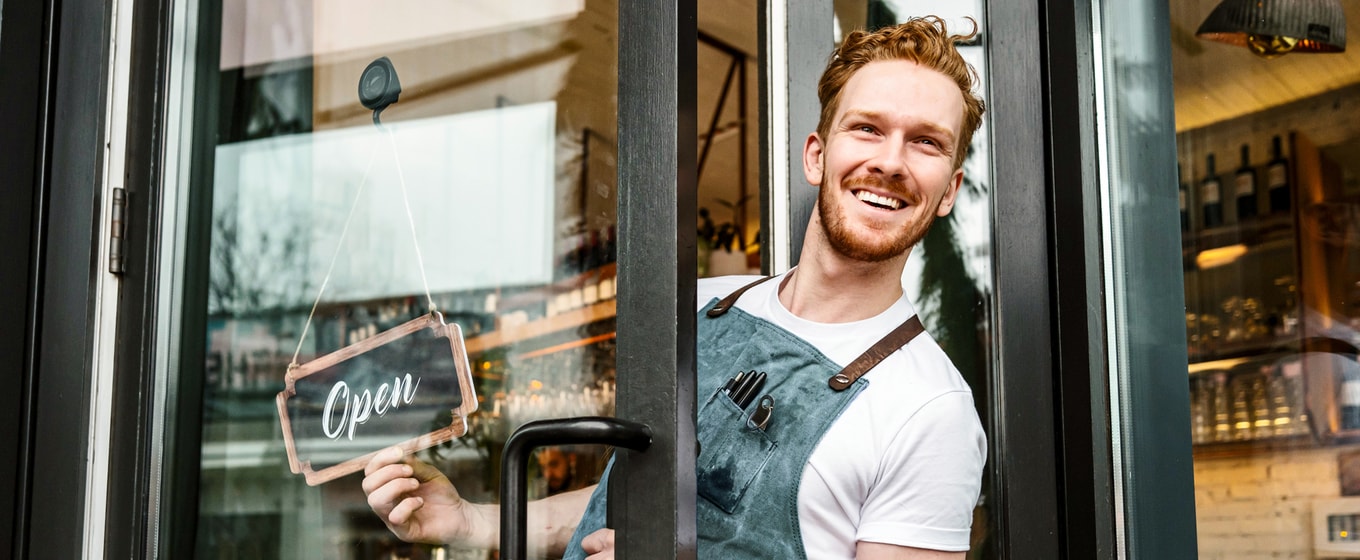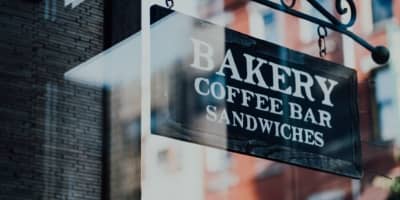The Recovery Loan Scheme enables small and medium-sized businesses to access financial support. It's designed to help SMEs grow with payments they can easily afford, to support access to finance for UK businesses.
The scheme makes available:
- up to £2 million per business group
- up to £1 million for business groups in scope of the Northern Ireland Protocol
Originally given financial backing by the Secretary of State in 2021, the scheme has gone through a number of changes. Now in its third iteration, eligibility criteria and how to apply have changed.
As of 2023, it is only available through a limited number of lenders.
This guide will provide an explanation of the scheme, and how it works. We'll discuss eligibility and help you decide whether to apply for the scheme or obtain a business loan.
What is the Recovery Loan Scheme?
The government introduced the recovery loan scheme (RLS) to help businesses affected by COVID-19. The scheme replaced two other government schemes - Coronavirus Large Business Interruption Loan Scheme (CLBILS), and The Bounce Back Loans Scheme (BBLS).
The government set up the scheme, which opened on 6th April 2021, to support businesses of all sizes. Businesses can use the funds to restart, recover, and grow amidst ongoing economic uncertainty.
The government extended the scheme three times since its launch. Each time, there have been some changes to the scheme.
Is the Recovery Loan Scheme still available?
The government has extended the recovery loan scheme until June 2024.
The secretary of state announced the current version of the scheme in August 2022. It continues to provide financial support for SMEs.
At this stage, no one knows if the government will extend the RLS again in 2024.
What is the new Recovery Loan Scheme (RLS)?
If you apply for a recovery loan in 2023, you'll notice that the number of available providers is limited. RLS loans aren't available to the majority of customers. This is due to the limited number of lenders approved by the British Business Bank.
The third version of the RLS will continue to offer support to businesses. But there are some important differences compared to previous versions.
Under this latest version, lenders must offer support via their own lending products first.
Additionally, the primary use of RLS is to fund businesses that would not meet the lenders' regular lending criteria. Factors such as business credit score, trading time, turnover, or homeowner status may contribute to this.
Lenders must confirm that they would not have been able to provide financing to the business under normal commercial terms. Lenders will only offer you an RLS loan if you fail to meet their typical business loan criteria.
This means that access to the scheme is more restricted than in previous years.
How does the Recovery Loan Scheme work?
The Recovery Loan Scheme helps small and medium-sized businesses access the necessary financing for growth and investment. Businesses can utilize the funds for a range of purposes, such as cash flow management and investment.
The scheme offers:
- Up to £2 million per business group.
- Up to £1 million for business groups covered by the Northern Ireland Protocol.
The actual amount you receive will depend on the lender's decision.
There are currently four types of finance available under the RLS. These are:
- Term loans (£25,001–£2 million, up to 6 years)
- Overdrafts (£25,001–£2 million, up to 3 years)
- Invoice finance (£1,000–£2 million, up to 3 years)
- Asset finance (£1,000–£2 million, up to 6 years)
The government guarantees 70% of the finance to the lender. However, as the borrower, you are 100% liable for the debt.
Approved lenders, listed on the British Business Bank's website, offer RLS loans to businesses. However, due to the changes to the scheme, most lenders are offering the RLS alongside standard business loans.
Do I have to be a homeowner?
Lenders have the option to request personal guarantees for facilities of any size. However, they can't take your principal private residence as security.
What is the duration of an RLS loan?
The duration of the facility depends on the type of finance you choose.
For loans and asset finance, the maximum length is up to 6 years. For overdrafts and invoice finance, loan terms are up to 3 years.
Who is eligible to apply for the RLS?
If your business is trading in the UK and has a turnover of £45 million or less, you may be eligible. However, it is important to demonstrate that your business is viable and not in difficulty.
Almost any SME can apply. But banks, building societies, insurers, and state-funded schools aren't eligible.
Under RLS, all applicants must pass the lenders' standard credit and fraud checks. So long as you pass these, you may be eligible.
Pros and cons of the Recovery Loan Scheme
The Recovery Loan Scheme (RLS) offers several advantages.
It provides financial support for businesses to grow and invest. Loans are available through approved lenders, allowing access to funding for those in need of a cash injection. The scheme offers varied financing options, including term loans, overdrafts, invoice finance, and asset finance. The government provides a guarantee to lenders, reducing the risk for businesses.
However, there are some considerations. Businesses need to meet the lender's criteria and pass a credit check. The money provided through the RLS is not a grant, and businesses are fully liable for the debt.
In addition to the considerations mentioned earlier, there are a few more cons to keep in mind. The funds available under the RLS may not be sufficient for some businesses' needs, especially larger enterprises. The interest rates charged by lenders can be higher compared to traditional business loans. Moreover, the scheme has an expiration date, and its future extensions are uncertain.
Overall, the Recovery Loan Scheme provides valuable support to businesses during challenging times. But it's important to carefully evaluate its terms and compare them to regular business loans.
Exploring all available financing options and considering individual business requirements can help make an informed decision.
Recovery Loan Scheme vs business loans
Currently, providers of the Recovery Loan Scheme must prioritize supporting businesses with their regular loan products.
However, they can use the RLS Government Guarantee to offer loans to businesses that wouldn't usually meet their lending criteria.
So what's the difference between using the RLS and a business loan?
Business loans can come from a variety of different places, and of course, can vary widely in their terms. Business loans are more widely available than the RLS. Additionally, alternative lenders are more likely to accept SMEs with some cash flow issues than traditional banks.
The Recovery Loan Scheme is only available via restricted lenders. It doesn't usually include flexible terms, such as repayment holidays or loan top-ups.
In comparison, funding from alternative lenders may provide access to more funding than the RLS. Business loans may be able to offer better interest rates, so it is worth exploring all your options before you decide.
With both RLS loans and business loans, lenders are required to undertake standard credit and fraud checks for all applicants.
If you opt for a loan from an approved RLS lender, be aware that you may not meet the criteria.
Applying for a business loan
Many schemes that were available during the pandemic have since closed.
If you're not eligible for the RLS, you may still be able to get a business loan. A business loan can help ease your cash flow, help you to hire additional staff, or buy more inventory.
With a business loan, you might find that the monthly repayments are more affordable than you expected.
Furthermore, exploring business loan options opens up opportunities for entrepreneurs to pursue their visions and drive their ventures forward.
Further information
More information about the Recovery Loan Scheme is on the official website of the British Business Bank.
How does the Recovery Loan Scheme work?
The Recovery Loan Scheme helps small and medium-sized businesses access the necessary financing for growth and investment. Businesses can utilize the funds for a range of purposes, such as cash flow management and investment.
The scheme offers:
- Up to £2 million per business group.
- Up to £1 million for business groups covered by the Northern Ireland Protocol.
The actual amount you receive will depend on the lender's decision.
There are currently four types of finance available under the RLS. These are:
- Term loans (£25,001–£2 million, up to 6 years)
- Overdrafts (£25,001–£2 million, up to 3 years)
- Invoice finance (£1,000–£2 million, up to 3 years)
- Asset finance (£1,000–£2 million, up to 6 years)
The government guarantees 70% of the finance to the lender. However, as the borrower, you are 100% liable for the debt.
Approved lenders, listed on the British Business Bank's website, offer RLS loans to businesses. However, due to the changes to the scheme, most lenders are offering the RLS alongside standard business loans.
Do I have to be a homeowner?
Lenders have the option to request personal guarantees for facilities of any size. However, they can't take your principal private residence as security.
What is the duration of an RLS loan?
The duration of the facility depends on the type of finance you choose.
For loans and asset finance, the maximum length is up to 6 years. For overdrafts and invoice finance, loan terms are up to 3 years.
Who is eligible to apply for the RLS?
If your business is trading in the UK and has a turnover of £45 million or less, you may be eligible. However, it is important to demonstrate that your business is viable and not in difficulty.
Almost any SME can apply. But banks, building societies, insurers, and state-funded schools aren't eligible.
Under RLS, all applicants must pass the lenders' standard credit and fraud checks. So long as you pass these, you may be eligible.
Pros and cons of the Recovery Loan Scheme
The Recovery Loan Scheme (RLS) offers several advantages.
It provides financial support for businesses to grow and invest. Loans are available through approved lenders, allowing access to funding for those in need of a cash injection. The scheme offers varied financing options, including term loans, overdrafts, invoice finance, and asset finance. The government provides a guarantee to lenders, reducing the risk for businesses.
However, there are some considerations. Businesses need to meet the lender's criteria and pass a credit check. The money provided through the RLS is not a grant, and businesses are fully liable for the debt.
In addition to the considerations mentioned earlier, there are a few more cons to keep in mind. The funds available under the RLS may not be sufficient for some businesses' needs, especially larger enterprises. The interest rates charged by lenders can be higher compared to traditional business loans. Moreover, the scheme has an expiration date, and its future extensions are uncertain.
Overall, the Recovery Loan Scheme provides valuable support to businesses during challenging times. But it's important to carefully evaluate its terms and compare them to regular business loans.
Exploring all available financing options and considering individual business requirements can help make an informed decision.
Recovery Loan Scheme vs business loans
Currently, providers of the Recovery Loan Scheme must prioritize supporting businesses with their regular loan products.
However, they can use the RLS Government Guarantee to offer loans to businesses that wouldn't usually meet their lending criteria.
So what's the difference between using the RLS and a business loan?
Business loans can come from a variety of different places, and of course, can vary widely in their terms. Business loans are more widely available than the RLS. Additionally, alternative lenders are more likely to accept SMEs with some cash flow issues than traditional banks.
The Recovery Loan Scheme is only available via restricted lenders. It doesn't usually include flexible terms, such as repayment holidays or loan top-ups.
In comparison, funding from alternative lenders may provide access to more funding than the RLS. Business loans may be able to offer better interest rates, so it is worth exploring all your options before you decide.
With both RLS loans and business loans, lenders are required to undertake standard credit and fraud checks for all applicants.
If you opt for a loan from an approved RLS lender, be aware that you may not meet the criteria.
Applying for a business loan
Many schemes that were available during the pandemic have since closed.
If you're not eligible for the RLS, you may still be able to get a business loan. A business loan can help ease your cash flow, help you to hire additional staff, or buy more inventory.
With a business loan, you might find that the monthly repayments are more affordable than you expected.
Furthermore, exploring business loan options opens up opportunities for entrepreneurs to pursue their visions and drive their ventures forward.
Further information
More information about the Recovery Loan Scheme is on the official website of the British Business Bank.









These cookies are set by a range of social media services that we have added to the site to enable you to share our content with your friends and networks. They are capable of tracking your browser across other sites and building up a profile of your interests. This may impact the content and messages you see on other websites you visit.
If you do not allow these cookies you may not be able to use or see these sharing tools.